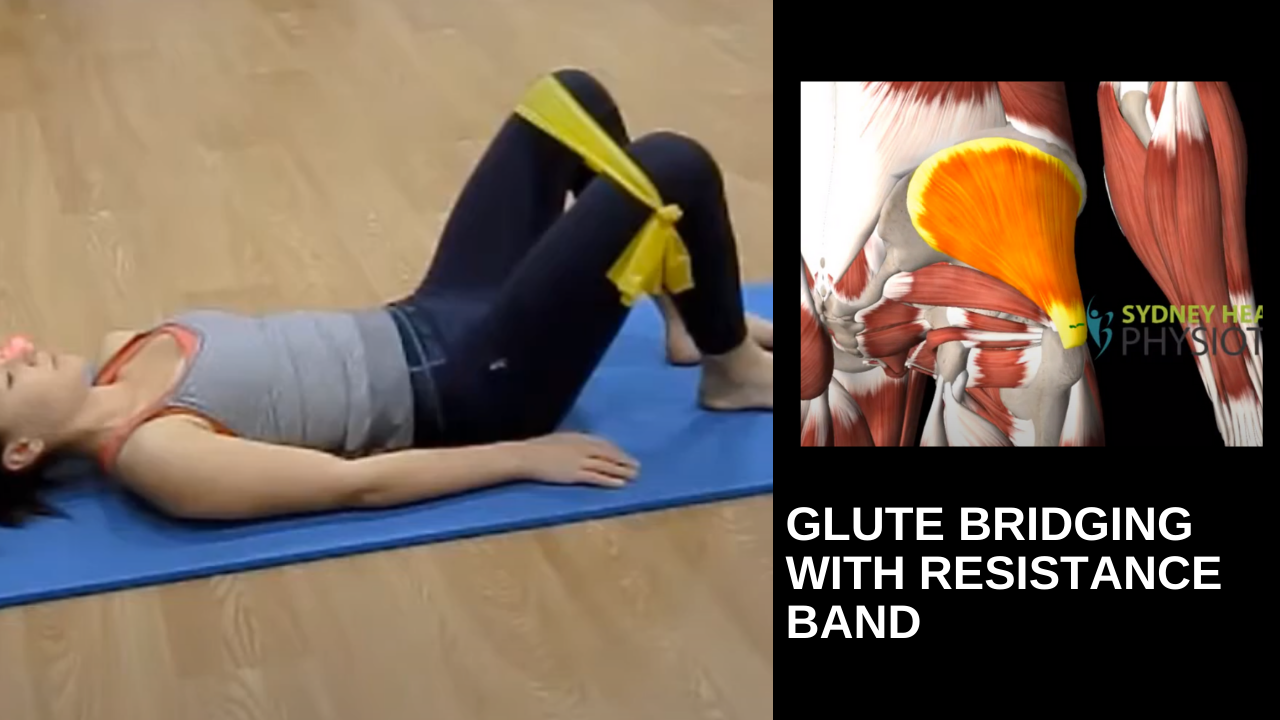Sidelying hip clam shell
The sidelying clamshell exercise strengthens the hip gluteal muscles, enhancing balance and stability. Perfect for individuals recovering from hip injuries, athletes, and those aiming to improve lower body strength, this exercise supports hip alignment, aids in injury prevention, and boosts functional movement.
Glute bridging with resistance band
Supine glute bridges with a band around the legs activate and strengthen the hip glutes, essential for back pain prevention and improved stability. Ideal for those with lower back discomfort, athletes, and individuals seeking core and hip support, this exercise promotes strong glutes to protect the lower back and enhance posture.
Ball hamstring bridge and roll
The hamstring bridge on a gym ball strengthens the hamstrings and glutes, crucial for stability and injury prevention in soccer players. This exercise is ideal for rehabbing and conditioning, promoting hamstring resilience, balance, and power essential for peak performance on the field.
Seated knee raise
The seated knee extension exercise targets the quadriceps, helping to relieve pain in the front of the knee. Ideal for individuals with knee discomfort or those in rehab, this movement strengthens knee support, promotes alignment, and aids in reducing strain on the patellar tendon.
ITB syndrome in long-distance runners and walkers
Ilio-tibial band injury and side-knee pain seen in runners. The involvement of hip and pelvis alignment in running is important.
Meniscus injury may not require surgery
Certain exercises can support knee meniscus health by strengthening surrounding muscles, improving joint stability, and enhancing mobility. Targeted movements for the quadriceps, hamstrings, and hip muscles reduce stress on the meniscus, promoting better knee alignment and resilience. These exercises aid in pain management, prevent further injury, and support long-term knee function.
Correct squat lifting technique helps you to stay strong
Using correct squat lifting technique not only strengthens your muscles and bones but also boosts mental health. Loading through the body stimulates bone density, reducing injury risk, while releasing endorphins that enhance mood and reduce stress. Practicing safe, effective squat techniques builds physical resilience and supports overall well-being.









